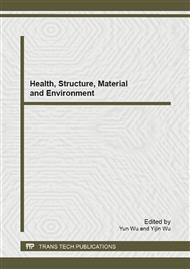p.905
p.911
p.922
p.926
p.930
p.936
p.941
p.946
p.953
Application of Shiono and Knight Method to Compound Open Channel Flow with One-Line Emergent Vegetation
Abstract:
A quasi two-dimensional model was developed to calculate depth-averaged velocity and bed shear stress in a straight compound channel with one-line emergent vegetated at the floodplain edge. Reduction in volume of water due to vegetation is modelled as porosity. Drag force due to vegetation is modelled as an additional momentum source term in the Navier-Stokes equation. Estimation methods for model parameters—friction factor, roughness height due to drag force, porosity, eddy viscosity and advection term-are discussed. The predictive capability of the model is assessed against experimental data with regard to distributions of depth-averaged velocity and boundary shear stress. The results show that the quasi 2D model well reproduces a reasonable simulation of the flow field under relative water depths of 0.24 and 0.52.
Info:
Periodical:
Pages:
930-935
Citation:
Online since:
February 2013
Authors:
Price:
Сopyright:
© 2013 Trans Tech Publications Ltd. All Rights Reserved
Share:
Citation:


